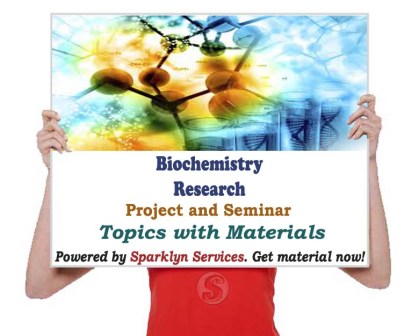1.1 Introduction
Wastewater irrigation provides essential nutrients and organic matter, saving water and reducing water contamination (Murtaza et al. 2010). Besides these benefits, a number of drawbacks are associated with the use of wastewater for plant irrigation (Murtaza et al. 2010, Khalid et al. 2017). Vanadium is widely applied in industries such as metallurgy, mining, oil refiling, automobile, and many others (Sharififard et al., 2016; Omidinasab et al., 2018). Such a wide range of applications results in the formation of significant amount of sewage contaminated with vanadium, which in the final stage end up in environmental waters. Due to the need to use of this element in many areas of industry and the difficulty of obtaining it, recovery from wastewater seems to be an interesting alternative.
As a prelude to other parts of this study, this chapter will discuss the background upon which this study was initiated, the statement of problems that led to this study, the Aim and Objectives of the study. Others are Significance of the study, Scope of work, Research hypothesis and questions, Limitations of the Study and Definition of technical terms.
1.2 Background of Study
In the last decade many studies have shown that antibiotic resistant bacterial strains may arise in the environment through cross- or co-resistance to metals or resistance pathway co-regulation (Akinbowale et al., 2007). The interaction between heavy metals and antibiotic resistance are of three types: heavy metals interaction with antibiotic compounds, heavy metals interaction with antibiotic resistance genes or even their products and heavy metal interaction with bacterial.
Wastewater contains potentially toxic elements, which can induce severe risks to human health and the environment (Mark et al. 2019, Shahid 2017). Depending on the concentrations of the metals and properties of the soil, uptake of heavy metals into plants is inevitable, which can pose toxic threats to biota, cause soil degradation and decrease plant yields (Luo et al. 2011). Mobile metals can be taken up by vegetables from the soils whilst scavenging for nutrients at varying degrees (Luo et al. 2011). Studies have shown that urban and garden soils can contain high amounts of trace metals (Charlesworth et al. 2011). These soils are therefore considered one of the notable sites for human exposure to trace metals (De Miguel et al. 2007). With regards to human exposure, soil to plant transfer represents a major pathway for contamination and eventual disease manifestation (Jolly et al. 2013). Studies have shown that chronic intake of even low levels of toxic metals over time can lead to nervous, cardiovascular, renal, and neurological impairments as well as bone diseases (Järup 2003). Therefore, the determination of the concentrations of heavy metals such as chromium (Cr), iron (Fe), lead (Pb), copper (Cu), zinc (Zn) and cadmium (Cd) and physicochemical parameters in some vegetable plants and soil at a typical irrigation site that has been on wastewater irrigation during the summer of which this study is aimed at, is of paramount importance.
Therefore, in Nigeria where the research was carried out, the activities that was conducted is to know the Green Synthesis of Vanadium Oxide Nanoparticle from Sabara Root Extract for Removal of Methylene Blue in Waste Water.
1.3 Statement of Problems
Wastes can be practically dumped, landfilled, incinerated, composted, digested anaerobically and/or used as animal feed. In many Asian countries food waste is still dumped with other household waste in landfills or dumpsites. Unfortunately, the capacity of the landfills is mostly surpassed due to a lack of waste management planning, so Wastewater irrigation provides essential nutrients and organic matter, saving water and reducing water contamination (Murtaza et al. 2010). Besides these benefits, a number of drawbacks are associated with the use of wastewater for plant irrigation (Murtaza et al. 2010, Khalid et al. 2017). The environmental pollution (leachate, gas, odors, flies, vermin, and pathogens) poses serious problems (Ngoc, 2009).
1.4 Aim and Objectives of Study
The aim of the study is to determine the Green Synthesis of Vanadium Oxide Nanoparticle from Sabara Root Extract for Removal of Methylene Blue in Waste Water. In achieving this aim, the following specific objectives were laid out as follows:
- To assess the Extract for Removal of Methylene Blue in Waste Water
- To examine the Vanadium Oxide Nanoparticle from Sabara Root Extract
- To evaluate the wastewater originating from leaching of the vanadium catalyst
1.5 Significance of Study
This study will be of immense benefit to micro biologist, and other researchers who intend to know more on this study and can also be used by non-researchers to build more on their research work. This study contributes to knowledge and could serve as a guide for other study.
1.6 Scope of Study
The study focuses on the Green Synthesis of Vanadium Oxide Nanoparticle from Sabara Root Extract for Removal of Methylene Blue in Waste Water in Nigeria
1.7 Limitations of the Study
During the course of this study, many things militated against its completion, some of which are:
- Time Constraint: The time frame given to accomplish this project was very short due to school academic calendar and it was carried out under pressure which made the researcher not to implement some necessary features.
- Research material: availability of research material is a major setback to the scope of the study.
- Frequent power failure: This made the researcher append more money on fuel to ensure sustainable power.
- Financial Constraint: Insufficient fund tends to impede the efficiency of the researcher in sourcing for the relevant materials, literature or information and in the process of data collection (internet).




